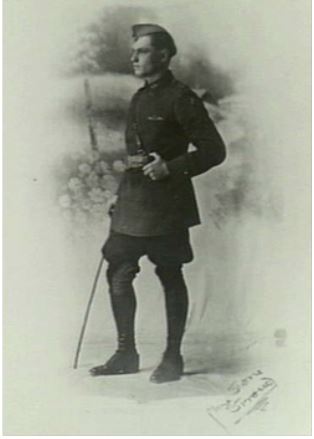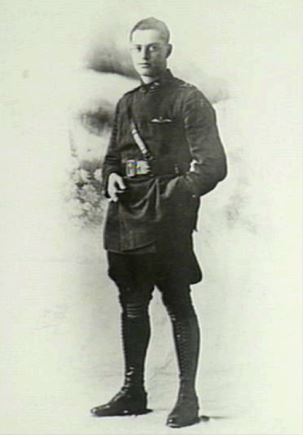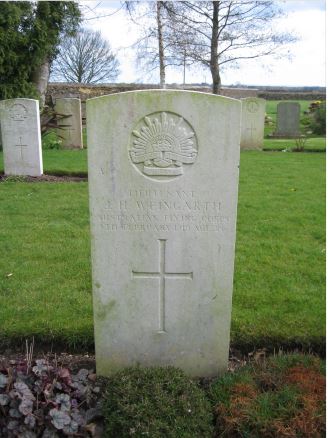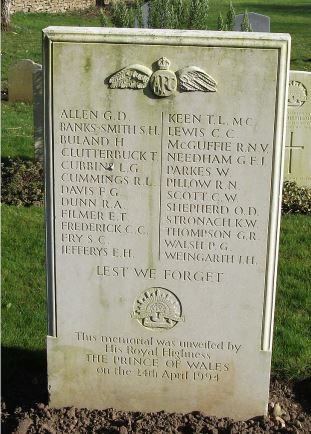5th Training Squadron, Australian Flying Corps


Jack Henry Weingarth was probably the most experienced of pilot buried in Leighterton Church Cemetery.
He was born at Marrickville, New South Wales (NSW), Australia on 17 May 1892, the son of John L and Gertrude Weingarth of Linden, Ethan Avenue, Darling Point, Sydney (latterly 10 Castlereagh Street, Sydney).
Prior to his enlistment at Darling Point, Sydney, on 22 January 1917, for the duration of the war plus four months, he was a Civil Engineer (Licensed Surveyor). His declared age was 24 years and eight months. He had previous military service with 5th Field Artillery Brigade (18 months as a Sergeant Instructor), at National Park, NSW. He had qualified and was issued with an Aero Club Certificate (dated 22 December 1916, number 45) prior to enlistment.
He embarked from Melbourne on the HMAT Shropshire (A9) on 11 May 1917, arriving in Plymouth on 19 July 1917. He was initially posted to Australian Flying Corps (AFC) HQ, London, via Parkhurst Camp, on 25 July and after undertaking further training graduated as a Second Lieutenant, Flying Officer Pilot on 22 November 1917 and was promoted to a full Lieutenant exactly three months later.
A posting to France followed on 9 March 1918, where he joined 4th Squadron, AFC. The squadron was employed on fighter sweeps and in various army support roles.
The period 18 June to 4 July 1918 was spent in England on leave, followed by action in France before he was posted back to England on 22 August. On 9 September he joined 5th Training Squadron at Minchinhampton, as an instructor. He was now a very experienced pilot with 376 hours solo flying logged with the Sopwith Camel, Snipe and Pup and the Avro 504K.
It was as an instructor and in a duel control Avro 504k (serial number E9310) that he took off from Minchinhampton at 2.25pm on 4 February 1919. His pupil was Second Lieutenant William Henry Millard. The aircraft flew south and at 4.50pm was flying in a north-easterly direction, probably heading for home, when it was above No 3 (W) Aircraft Repair Depot Aerodrome at Yate, near Chipping Sodbury. The engine started to misfire and Weingarth spoke to Millard, via the cockpit telephone link, saying: “we are running short of petrol; we will land at this aerodrome” and he took control of the machine. He put the aircraft into a steep left hand turn, into the wind, and when about 200 feet up the engine stopped. The nose of the aircraft dipped and it dropped to the ground making a forced landing on the aerodrome. The impact caused the fuselage to be completely smashed from the front to the back seat. Weingard died immediately from multiple injuries. Millard survived the crash, with injuries to his hip and was taken by ambulance to 2nd Southern General Hospital, Bristol.
A Court of Inquiry concluded that the accident was due to the aircraft having insufficient flying speed when making the steep turn and due to the lack of petrol no use could be made of engine power to get the machine out of trouble.
Lieutenant Jack Weingath, was 26 years old when he died and was buried with military honours in Leighterton Church Cemetery on 8 February 1919: a CWGC headstone now marks his grave.


Researched by Graham Adams 12 February 2018
